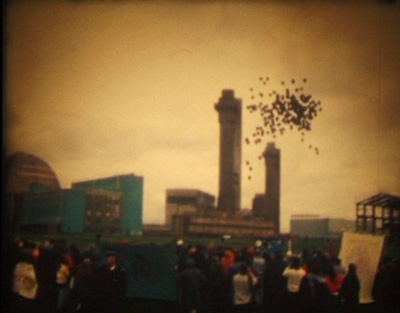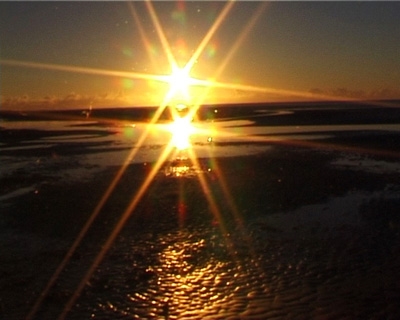

1987-2003, UK, Super 8/Mini DV, colour, sound, 20 min. Edited by Anita Anastasia Bryan.
A social issue film that combines elements of Mass Observation and landscape filming to investigate the psychological and environmental effects on inhabitants, living and working in the proximity of a nuclear processing plant. West Cumbria. A place synonymous with the landscape poetry of William Wordsworth was, in 1956 changed for ever when the United Kingdom Energy Authority invited Queen Elisabeth II to open Britain's first nuclear reactor. From this point on the people of Cumbria would have to "balance their lives against their livelihood". William Pearson's film provides a means for some of the Sellafield generations to express their economic anxieties, environmental resentments and health fears. Oral testaments - as the soundtrack to the film. However, he also gives voice to the nuclear industrialists and their processing plant propaganda. This contrasting continues within the imagery of the film. A reoccurring tracking shot within the landscape looks on to the Fells Road - the well trodden short cut used by the workers, is juxtaposed by colourful footage of an anti-nuclear protest march, reflecting the multi-dimensional character of people living under the shadow of potential catastrophe. We remember Chernobyl 1986.
"The disembodied voice of the official Sellafield tour commentary is always located in the landscape. The disembodied voices of the interviewees are mostly located in the carnival of protestation and the locality of the people. The re-occurring tracking shot is a distantuating devise getting closer to the object."
From William Pearsons film notes
